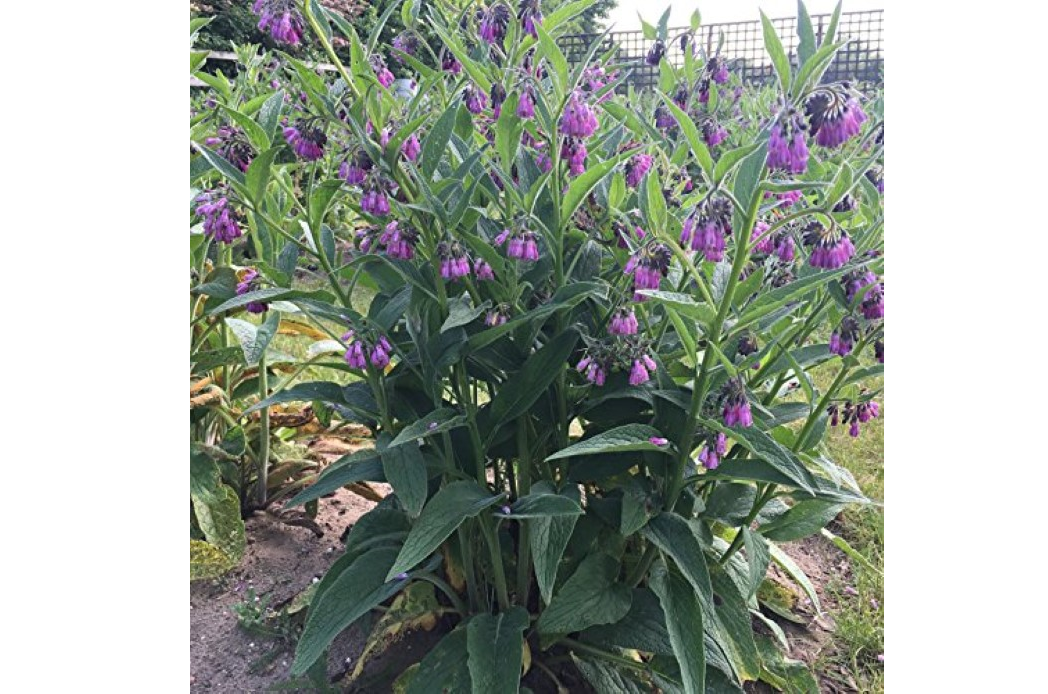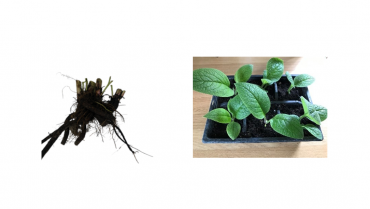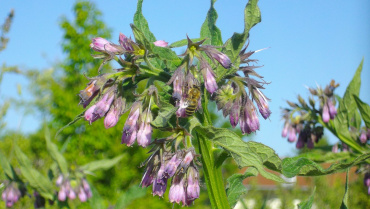Planting your first comfrey patch…
So, if you’re wanting comfrey plants in your organic garden, we now cover a few things that you need to know. Symphytum x Uplandicum is a sterile strain – meaning that it doesn’t produce viable seeds, which means it’s far less invasive than others. However, you need to give some careful thought about the permanent location for it, as they’re hard to move when fully grown due to their long roots.
Some prefer to plant their comfrey in large pots, but this does present the issue of stopping them from dehydrating. Other popular locations are raised beds, but in truth, comfrey is quite hardy and will thrive in most types of soil bed once it has established itself. Try to avoid chalky soil if possible.
Should you have limited space in your garden, it won’t matter if your comfrey is away in the corner, so long as it’s watered regularly when it’s young. It’s best to choose an area that’s free of weeds with well-rotted manure or compost mixed in and leave about 2 feet between each of the plants. Once established, your comfrey won’t take much maintaining and mulching the area between the plants won’t be strictly necessary.
Comfrey plants usually grow well in full sun or partial shade. In late autumn the leafy plant will die down and disappear below the ground surface, sleeping until early spring when new leaf growth will begin to appear. You then won’t have long to wait to see its pretty bell shaped, lilac/pink flowers beginning to emerge. Leave the plant alone to establish itself well in the first year. By the second year you can begin to harvest and put the leaves to good use in your composting, mulching or plant feed projects.
Take a look at our comfrey garden and see how beautiful the comfrey looks in full flower!





1 Comment
I have just received my comfrey plugs and I am so happy with them! They came in perfect condition Thankyou so much 😍
Add Comment